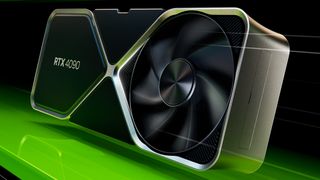Leaker says Nvidia's RTX 4090D to use hamstrung GPU variant to comply with US export regulations, new AD102-250 die
Lower core count and lower clocks?

As we reported yesterday, Nvidia is reportedly building a version of its GeForce RTX 4090 product — presumably called the GeForce RTX 4090D. This version will comply with the latest U.S. export rules concerning hardware that could be used for artificial intelligence. Today, renowned hardware leaker @Zed_Wang revealed that the graphics cards will allegedly be based on the AD102-250 graphics processor. As this is a leak, take the news with some salt.
4090DAD102-250November 30, 2023
The GeForce RTX 4090D could theoretically make our list of the best graphics cards, if it's not limited to China. While the specs are unknown, we can hazard a guess that it will outperform the GeForce RTX 4080 but not reach RTX 4090 levels of performance. The RTX 4090 carries the AD102-300/AD102-301 GPU. The RTX 4090D looks set to be based on a significantly cut-down AD102-250 processor. At this point it's hard to say how the GeForce RTX 4090D will stack up against possible GeForce RTX 4080 Ti or GeForce RTX 4080 Super products, but it will likely sit higher up the GPU benchmarks hierarchy. It will also likely cost quite a bit more that a 4080 refresh.
Nvidia needs to lower the FP8 and FP16 performance of the GeForce RTX 4090 by at least 10% in order to reduce its AI potential, and decrease its TPP score from 5,286 to lower than 4,800 points. Nvidia cannot just cut down the Tensor core FP8 and FP16 processing, as the number of Tensor cores is tied to the number of SMs (Streaming Multiprocessors). How exactly Nvidia will choose to configure its AD102-250 to comply with the U.S. export rules is currently unknown, though there are multiple possibilities.
On the one hand, the company could reduce the number of SMs, CUDA cores, and Tensor cores on the GeForce RTX 4090D, which would increase product yields and cut costs. However, GPUs with a reduced number of active units tend to be good overclockers, so any 'lost' AI performance could be 'restored' in that fashion. Nvidia would either have to significantly cut the number of CUDA cores and risk that factory-overclocked GeForce RTX 4080 Super/RTX 4080 Ti would overlap with these parts, or moderately cut down the number of CUDA cores and prohibit heavy overclocking.
Besides the exact specifications, we also don't know precisely when the RTX 4090D is set to emerge. The earlier the better, of course, but the company will have to test everything before shipping to play it safe with the U.S. government. We suspect Nvidia will likely release the new device well before February 10, the Chinese New Year, as factories tend to shut down for a couple of weeks to celebrate.
Stay On the Cutting Edge: Get the Tom's Hardware Newsletter
Get Tom's Hardware's best news and in-depth reviews, straight to your inbox.

Anton Shilov is a Freelance News Writer at Tom’s Hardware US. Over the past couple of decades, he has covered everything from CPUs and GPUs to supercomputers and from modern process technologies and latest fab tools to high-tech industry trends.
Most Popular




